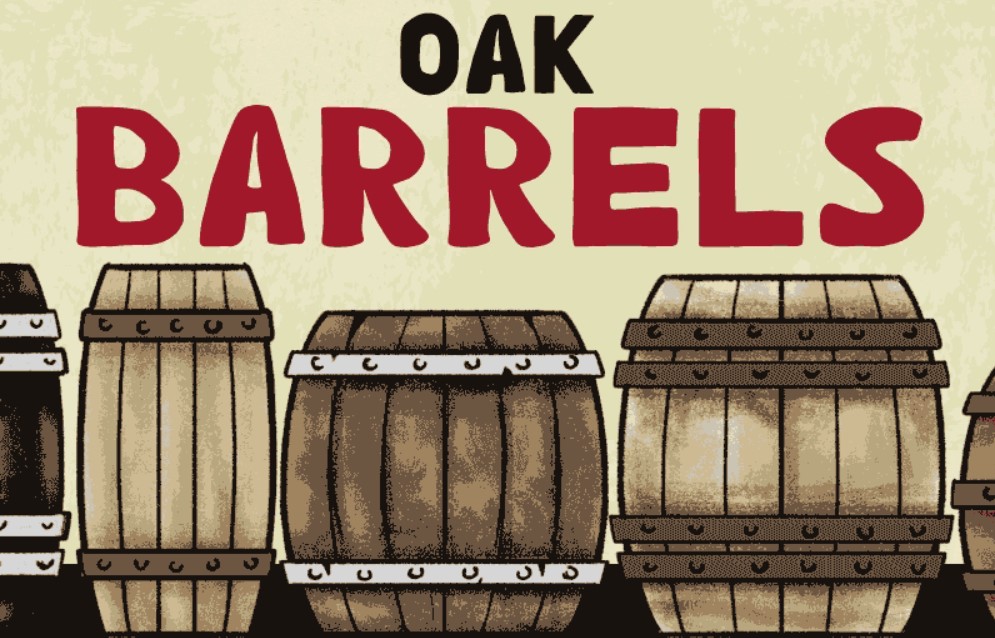August 11, 2023. – As Wine&more writes, oak-aged wines hold a special place in the hearts of wine enthusiasts, offering a unique flavour profile and complexity that sets them apart.
The process of ageing wine in oak barrels imparts distinct characteristics, elevating the tasting experience to new heights if done with sensibility and meaning.
Let us delve into the realm of oak-aged wines, exploring
- what they are,
- which wines undergo oak aging,
- the characteristics they acquire, and, most importantly,
- the perfect food pairings to enhance their delightful nuances.
What is oak-aged wine?
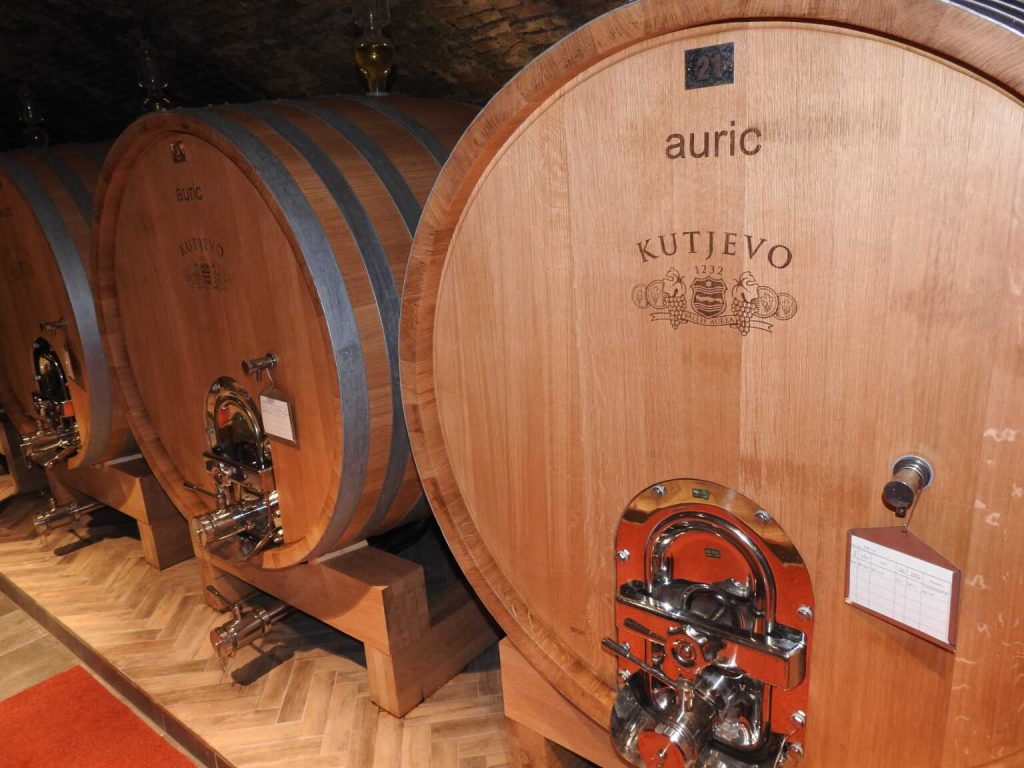
Oak-aged wine refers to wines matured in oak barrels, allowing them to develop flavours and textures distinct from wines aged in other vessels.
Oak barrels not only provide a controlled environment for wine ageing but also contribute flavours, aromas, and tannins to the final product.
Exactly here is where the delicate balance lies – to express a variety or a terroir, oak should be used as a vessel to enhance the characteristics of the wine and not to introduce foreign aromas.
Oak barrel usage is not limited to ageing alone, as wines could ferment in oak barrels as well, representing a traditional method that was customary in the absence of modern technological equipment.
Also, while oak has been the traditional choice for wine barrels due to its desirable characteristics, other wood varieties such as cherry, chestnut, and acacia have also been used in winemaking.
Each wood type imparts its unique flavours and characteristics to the wine, offering winemakers a diverse range of options to explore and experiment with.
Oak barrels were historically used in winemaking because of numerous reasons:
1. Historical Significance of Oak Barrels in Wine Aging
The use of oak barrels for ageing wine dates back centuries and has a rich historical significance in winemaking.
In the past, wood barrels were the primary vessels available for storing and transporting wine. Over time, winemakers discovered that these barrels served practical purposes and contributed unique qualities to the wine, enhancing its flavour, aroma, and longevity.
2. Natural Preservation and Maturation
Oak barrels offer a natural and effective way to preserve and mature wine. The wood is porous, allowing for controlled oxygen exchange between the wine and the outside environment.
This gradual exposure to oxygen helps soften harsh tannins and integrates the flavours, resulting in a more balanced and harmonious wine.
Additionally, the tight grain structure of oak helps prevent excessive oxidation, ensuring the wine ages gracefully.
3. Flavour Infusion from Oak
Oak barrels impart various flavours and aromas to the wine, enhancing its complexity and character. The compounds present in oak, such as lignin, hemicellulose, and vanillin, are gradually released into the wine during ageing.
This infusion adds layers of flavour, including vanilla, caramel, spice, and smoky notes, which blend with the natural fruit characteristics of the wine.
The specific flavours and their intensity in the final wine depend on the type of oak, its origin, and the toast level of the barrel, but also very much depends on the type of wine.
4. Tannin Structure and Mouthfeel Enhancement
Oak barrels also contribute to the wine’s tannin structure and mouthfeel.
Tannins extracted from the wood during ageing provide structure and texture, giving the wine a more supple mouthfeel.
The interaction between the wine and oak tannins can soften harsh astringency, resulting in a smoother and more approachable wine.
5. Micro-Oxygenation and Aging Potential
The controlled permeability of oak barrels allows for micro-oxygenation, which is a gradual exposure to small amounts of oxygen.
This process can help facilitate chemical reactions within the wine, aiding in developing complex flavours and aromas over time.
Oak ageing also imparts stability and longevity to the wine, allowing it to evolve and improve with age.
Which wines are aged in oak?
Various types of wines benefit from oak ageing, with red wines being the most commonly associated with this process.
Classic red varietals such as Cabernet Sauvignon, Merlot, Pinot Noir, and Syrah often undergo oak ageing. However, oak treatment can also benefit white wines like Chardonnay and Viognier.
Therefore, while red wines are commonly associated with oak ageing, a range of white wines can also benefit from this process. Let’s explore the different types of wines that are frequently aged in oak barrels:
a) Red Wines:
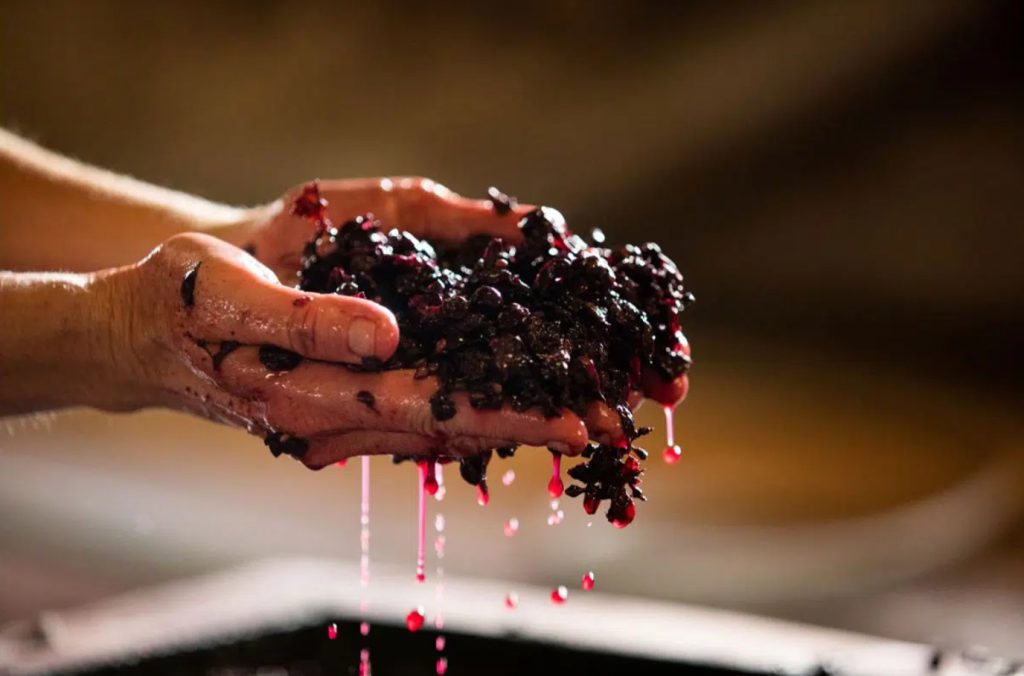
Cabernet Sauvignon
This classic red varietal is often aged in oak barrels to develop its structure and complexity. Oak ageing adds layers of flavours such as cedar, tobacco, and subtle vanilla, complementing the wine’s intense dark fruit characteristics and providing a framework of smooth tannins.
Merlot
Merlot, known for its plump fruitiness and velvety texture, is another red wine that benefits from oak ageing. The oak imparts flavours of chocolate and spices, elevating the wine’s richness and adding depth to its character.
Pinot Noir
While oak ageing is less obligatory for Pinot Noir than other reds, it historically contributes intriguing nuances to the wine. A lighter oak treatment can enhance the wine’s structure, while subtle toasty notes can integrate harmoniously with Pinot Noir’s delicate fruit and vibrant acidity.
Syrah/Shiraz
Oak ageing Syrah, also known as Shiraz in some regions, can yield powerful and complex wines. The oak adds various flavours, from peppery to smoked, leathery, or hints of vanilla, enhancing the wine’s intensity and usually contributing to its long ageing potential.
b) White Wines:
Chardonnay
Chardonnay is the most prominent white wine varietal associated with oak ageing. The technique can add depth, richness, and complexity to the wine.
Depending on the winemaker’s preference, Chardonnay can undergo various degrees of oak treatment, ranging from subtle and integrated to pronounced and buttery.
Oak imparts flavours of vanilla, and toasted nuts, enhancing the wine’s texture and adding layers of complexity.
Viognier
This aromatic white wine benefits from oak ageing, which can amplify its exotic floral and fruit characteristics. Oak-aged Viognier exhibits flavours of dried apricot, honeysuckle, and spice, with a creamy texture and a hint of vanilla from the oak influence, creating a luscious and aromatic wine.
Graševina
This Eastern European variety is most successful in the continental part of Croatia. When Graševina is subjected to oak ageing, it is often done in a way that preserves the wine’s delicate fruitiness while adding nuances of vanilla, spices, and a rounder mouthfeel.
This approach aims to strike a balance between the natural characteristics of Graševina and the influence of oak, resulting in a wine that maintains its freshness while gaining additional complexity from the oak treatment.
Ultimately, the decision to oak age Graševina depends on the winemaker’s stylistic preference and the desired expression of the wine.
Whether it undergoes oak ageing or not, Graševina is typically appreciated for its crisp acidity, citrus and orchard fruit flavours, and ability to reflect its origin’s terroir.
What characteristics will oak give to a wine?
Oak aging imparts several distinctive characteristics to wine, making it a highly sought-after technique among winemakers. These include:
- Enhanced Complexity: Oak ageing adds layers of complexity to the wine, with flavours and aromas that range from vanilla, caramel, and baking spices to toasted oak, coconut, and smoky notes.
- Textural Influence: The tannins present in oak can influence the mouthfeel of the wine, making the tannin structure more velvety or smoother, depending on the type and use of the oak, but also the type of wine.
- Oxidative Effects: Perhaps the most important oak ageing influence is that oak barrels allow for controlled exposure to oxygen, which can result in desirable oxidation. This oxidative influence can soften the wine, mellowing its tannins and enhancing its overall balance.
Oak-aged wine food pairing examples
Veal pairings:
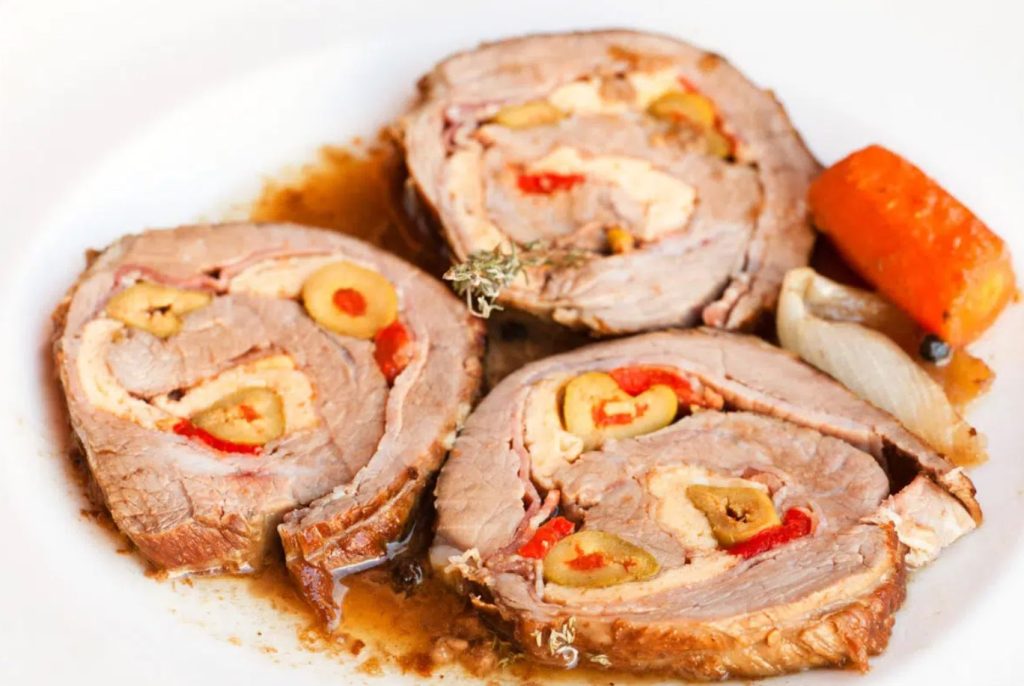
Veal’s delicate and tender nature pairs well with oak-aged wines that offer moderate tannins and a harmonious balance of fruit and oak influence. Consider pairing veal with a well-aged Cabernet Sauvignon or Merlot, as these wines provide a complementary structure and flavours of ripe dark fruit, subtle spice, and oak nuances.
Pair veal with: Kutjevo Maximo Oro
An excellently balanced blend of Graševina, the most popular white grape wine variety in Croatia, and Chardonnay, one of the most famous wine varieties in the world from the exclusive, premium location of the Vetovo vineyard.
Maximo Oro is decorated with unique yellow colour with a greenish sheen, rounded varietal aromas and a discreet minerality specific to the Kutjevo sub-region.
Primary floral notes open up on the nose. At the same time, the fullness of the taste reveals the delicate fruitiness of ripe apples and pears with a harmonious and pleasant body of refreshing acids.
Sweetwater fish pairings:
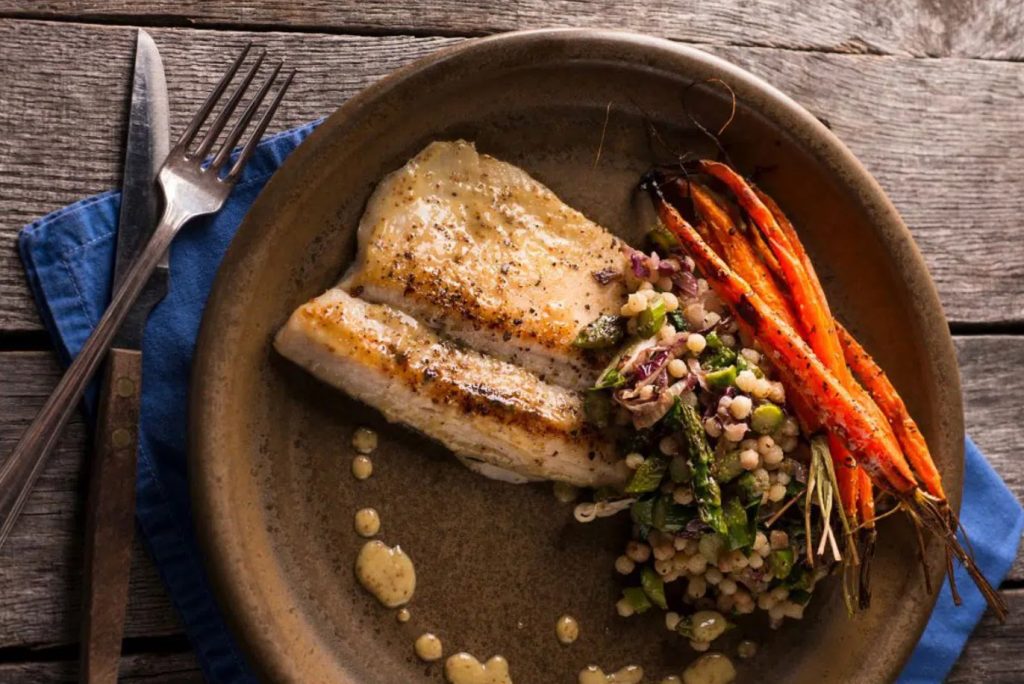
Oak-aged white wines with sufficient acidity and a restrained oak presence can enhance the delicate flavours of sweetwater fish.
Opt for a lightly oaked Chardonnay or a charming white Graševina. These wines will complement the fish’s natural sweetness while adding layers of complexity and a touch of richness.
Pair sweetwater fish with Kutjevo De Gotho Graševina
Dominant olfactory associations opens with fruity aromas of peach, ripe apple and quince with a noticeable touch of floral notes.
The grapes for this award-winning wine are hand-picked and come from the special vineyard location of Vetovo.
Graševina de Gotho represents a refined, layered, complex wine of golden-yellow, crystal clear colour. Later harvesting and careful ageing in Slavonian oak barrels achieve full flavour, fine ripeness, and long shelf life.
Game Meat pairings:
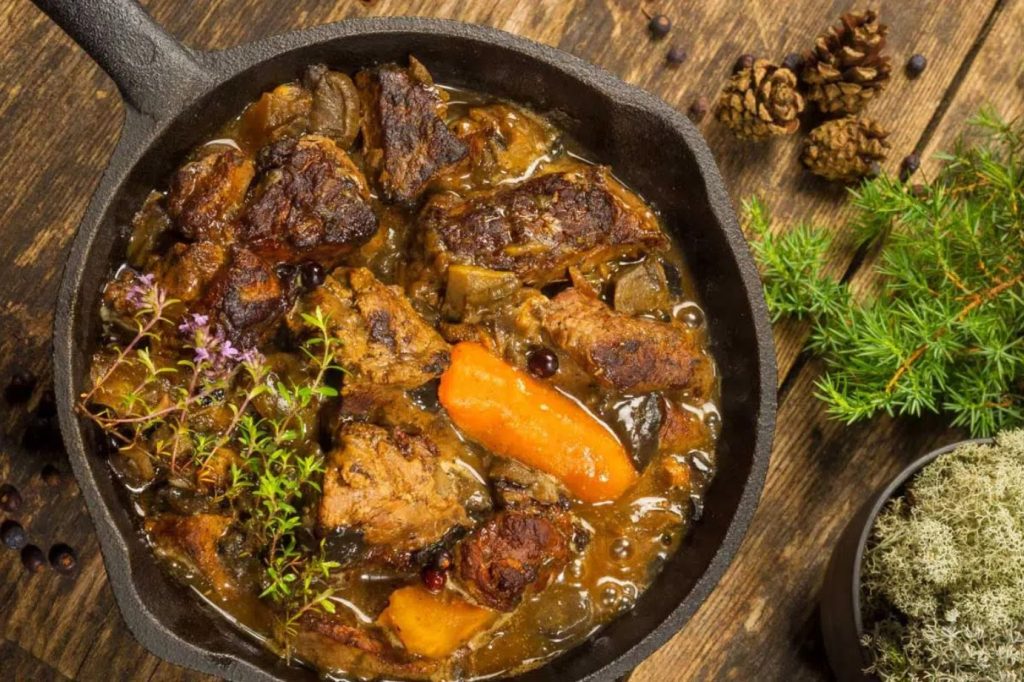
The robust flavours of game meat demand equally bold and complex wines. Oak-aged red wines with pronounced tannins and intense flavours, such as a well-aged Bordeaux, Barolo, or a powerful Syrah, make excellent companions for game meat. The oak influence in these wines adds depth and structure, complementing the meat’s gaminess.
Pair game meat with: Kutjevo Koria Cuvee
A single-vineyard wine that brilliantly balances the characteristics of Cabernet Sauvignon, pronounced tannins, and recognisable aromatics of blackberries with subtlety, elegance and the earthy charry tones that represent the varietal characteristics of Pinot Noir.
The maceration and fermentation took place over three weeks, and after many years of aging in barrels of 1,500 to 3,000 liters, we got the best of both worlds.
Vanilla and chocolate notes are embedded into wine that structurally makes an ideal companion to a hearty game meat dish.
Conclusion
Exploring the world of oak-aged wines opens up a realm of sensory pleasure and culinary opportunities. Understanding the process, characteristics, and food pairings associated with these wines allows us to elevate our dining experiences and appreciate the intricate relationship between food and wine.
Whether you choose to indulge in a velvety Cabernet Sauvignon alongside succulent game meat or savor a lightly oaked Graševina or Chardonnay with delicate sweetwater fish, oak-aged wines offer a delightful journey for the palate and a feast for the senses.
NOTE: The article was originally written at wineandmore.com

